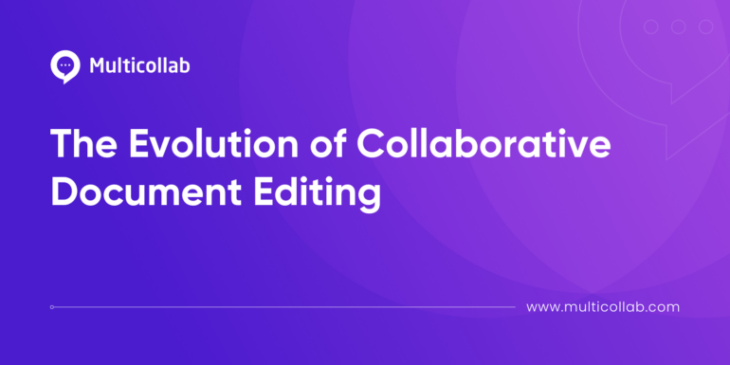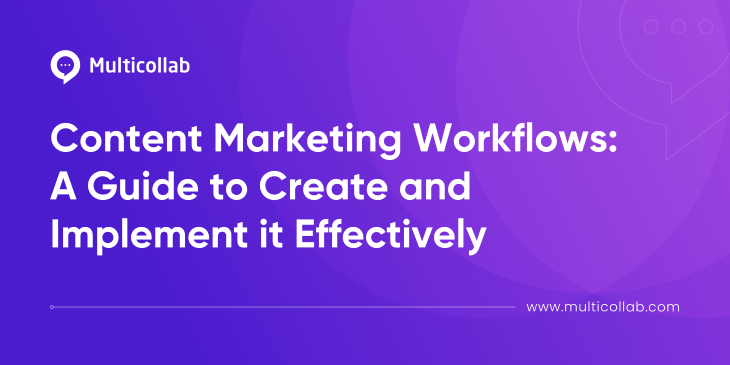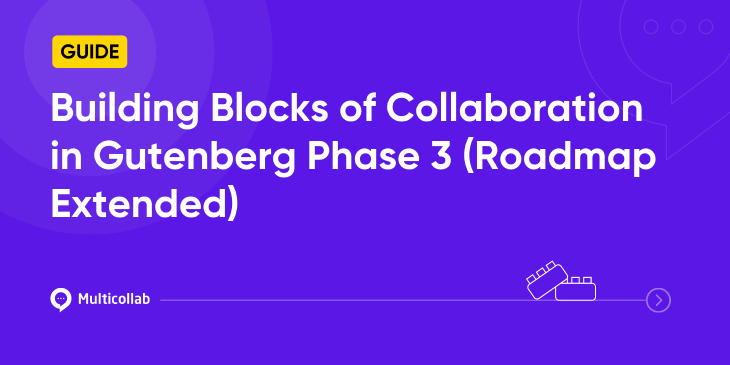Table of Contents
661 WordPress websites are created every day.
WordPress is the favorite of editors and publishers for a number of reasons.
Unfortunately, a smooth editorial workflow is not one of them.
The content editorial workflow and approval process ensures that the content checks all the right boxes before it is published. WordPress editors are the point of contact for authors and clients during the publication process.
Let’s start by understanding the challenges faced by content editors and publishers.
Roadblocks in WordPress editorial workflow
While blogging on WordPress, approving the post before publishing brings three roadblocks for content editors and publishers.
1. Unclear feedback from clients
The clients have a better understanding of the content piece as they know their business and target audience better. Therefore, the WordPress approval workflow for content publishing is incomplete without feedback from clients.
The chosen method of sharing feedback is via email as it is asynchronous. Suggestions and feedback are shared for corresponding snippets from the article and are forwarded to the content development team.
This process is quite challenging. It takes a lot of time and is confusing during collaboration. As there are many people in the email chain, it can be difficult to know who is the appropriate recipient of the feedback. Adding those details makes the message extremely long.
The alternative to this is screen-sharing video calls which are difficult for teams working from different time zones. Scheduling calls and making sure everyone from the client team has shared their feedback for one review cycle makes the process cumbersome.
Sometimes collaborators have to wait as others complete their pending reviews on WordPress. This needlessly stretches the review process.
An asynchronous WordPress content review process that lets clients share clear and direct feedback with relevant persons will be the best solution.
2. Multiple versions of a document
During the WordPress content approval process, a different draft is shared with the clients for review than the one on which the authors worked. This is done to keep the reviews and minor changes in a different document and to ensure not many individuals edit the content.
Although all content development teams don’t do it, many do.
This creates multiple versions of a document that need to be maintained.
If an organization doesn’t use tools like Google Docs, then these documents are shared via email. It complicates the process further as everyone in the loop will have multiple versions saved on their local drive.
The best way to remove this roadblock is to have a tool that helps everyone collaborate on one version of the document with different permissions directly on WordPress Editor.
This will take care of the following problem.
3. Transferring content multiple times
This is a common occurrence in the WordPress editorial workflow. During the publication process, the content is copied from a tool like Google Docs and pasted into the WordPress Gutenberg editor.
Then the draft is examined by the clients and if there is an issue with it, it is reported back to the author. Generally, the author does not have permission to edit the draft in WordPress editor, they have to edit it in the content management tool.
In other words, every time there is a correction the edits have to be done in two different places. The first place is the author’s draft of the content and the second place in the WordPress Gutenberg editor.
This process repeats itself until the content is approved.
The solution for this roadblock is to have the clients, and the authors collaborate directly on the WordPress Gutenberg editor. Now they won’t have to transfer the content each time an edit has been made.
The above challenges make the WordPress content approval and publication process inefficient, to say the least.
Fortunately, all of these problems can be solved with Multicollab.
How does Multicollab make publishing WordPress drafts easy?
Multicollab, a WordPress content collaboration plugin, enables Google Docs-style collaboration inside the WordPress blog editor. Here’s how it helps remove the roadblocks faced by content editors.
1. Direct feedback from clients to the authors
Multicollab enables collaboration on content directly on WordPress Gutenberg editor, just like they do on Google Docs. As a result, clients and managers can directly share their feedback with the content development team.
This will get rid of long and descriptive emails, unending message chains, and boring screen-sharing video conferencing calls.
Take a look at the GIF below to see how easy the whole process becomes.
The feedback process will be faster and the authors will get more accurate and actionable reviews. This will save resources for everyone involved.
2. Clear assignment of tasks
A common source of confusion for content writers is the unclear assignment of tasks. Because of this reason, they are constantly stepping on each other’s toes and are more likely to repeat the same mistakes.
With Multicollab collaborators can tag, mention, and assign tasks to each other on the WordPress blog editor. The collaborators can also access the comment history to avoid making the same errors.
Here is how the process looks.
3. No need to transfer content from Google Docs to WordPress
While editing content on WordPress Gutenberg Editor, you can directly see how the content will appear once published. As a result, there will be fewer last-minute changes. Those changes will be taken care of then and there.
No more copying and pasting from a different source.
As Multicollab is also compatible with Grammarly, your writing process will be quite similar to what it used to be. Consequently, it also manages the versioning issues as the complete approval workflow will be shifted to WordPress.
Take a look.
That’s a Wrap
Multicollab makes the WordPress content approval process easier for editors. It allows direct asynchronous communication, assignment of tasks, and collaboration on the WordPress Gutenberg editor.
Currently, the free version of Multicollab allows editorial collaboration on blog articles. You can upgrade to expand its capabilities, collaborate on multimedia, and get premium support from our team.
With Multicollab, approving the post before publishing on WordPress will become faster.
Install the plugin to your WordPress website now to get all the advantages.







